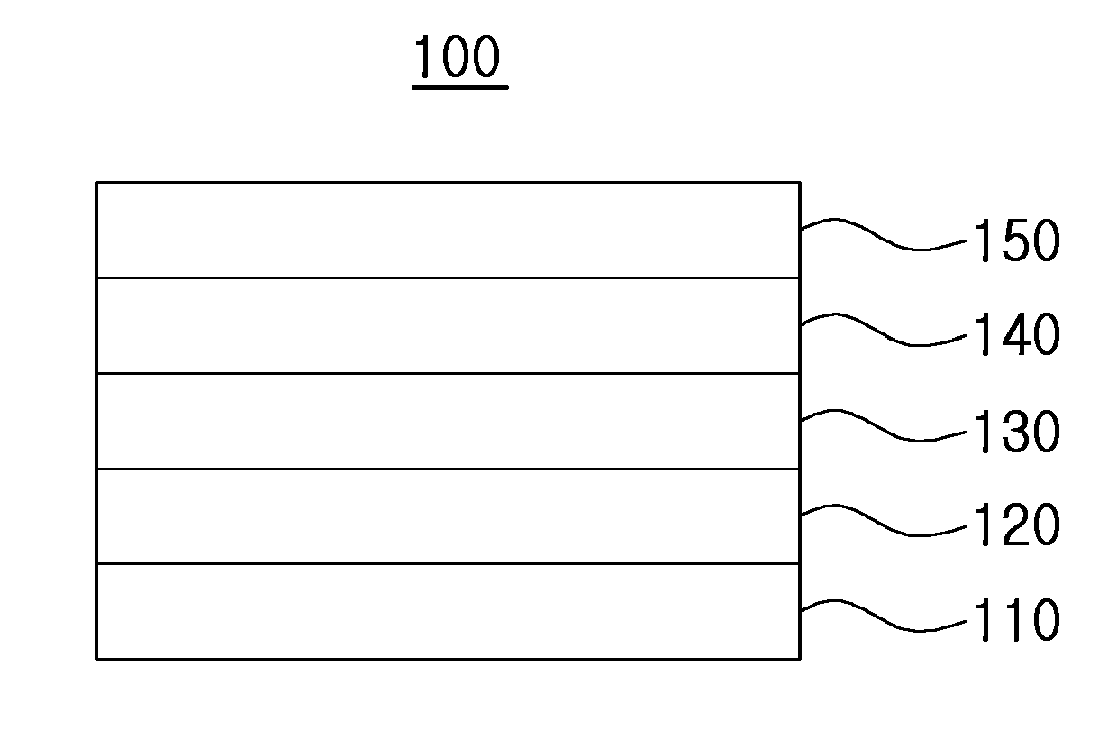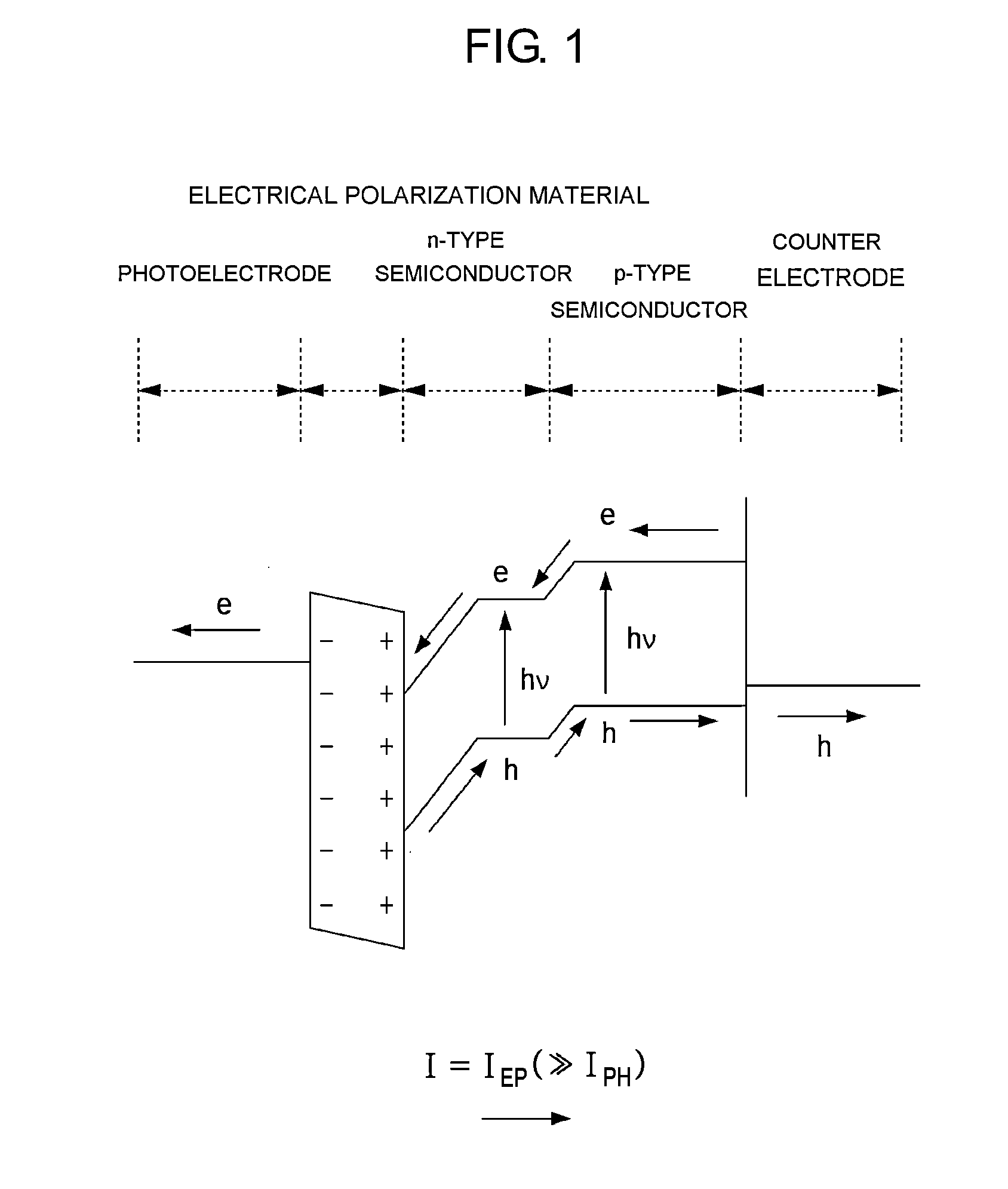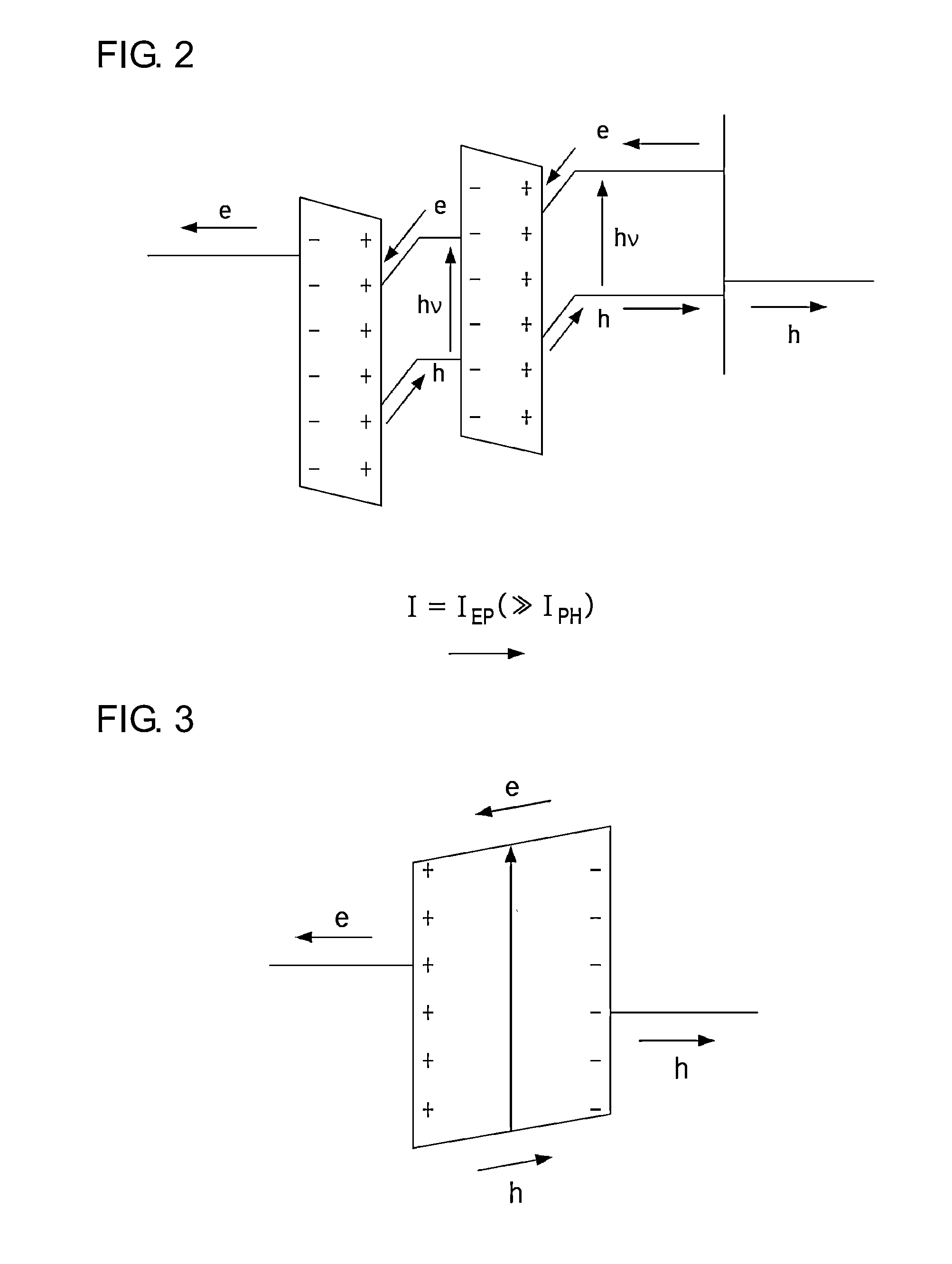Solar cell and method of manufacturing therefor
a technology of solar cells and manufacturing methods, applied in the field of solar cells, can solve the problems of increasing the processing cost of fabricating nanostructures and reducing economic efficiency, and achieve the effects of increasing photoelectric conversion efficiency, and improving photoelectric conversion efficiency
- Summary
- Abstract
- Description
- Claims
- Application Information
AI Technical Summary
Benefits of technology
Problems solved by technology
Method used
Image
Examples
example 1
[0100]In Example 1 of the present invention, a CIGS thin film solar cell was manufactured by the following process.
[0101]First, a lower electrode was formed by depositing a molybdenum (Mo) layer on a SLG substrate to a thickness of about 1 μm using a sputtering method. Subsequently, a CIGS thin film was deposited to a thickness of about 2 μm to form a light-absorbing layer.
[0102]As a method of forming the CIGS light-absorbing layer, there are a co-evaporation method in which deposition is performed by individually and simultaneously evaporating elements, such as Cu, indium (In), gallium (Ga), and selenium (Se), in a high vacuum atmosphere and heating the substrate in a temperature range of 500° C. to 600° C., and a two-stage method in which a precursor including elements, such as Cu, Ga, and In, or a precursor including Cu, Ga, In, and Se is used to form a thin film, and selenization is then performed in a H2Se gas or Se vapor atmosphere.
[0103]Also, as a method of forming the precur...
example 2
[0139]Although the solar cell was manufactured by using a vacuum deposition method in Example 1 of the present invention, but a solar cell may be formed by using a non-vacuum deposition method such as chemical bath deposition (CBD), spin coating, doctor-blade coating, drop-casting, screen printing, and inkjet printing, and a solar cell according to Example 2 of the present invention may include an electrical polarization layer which was formed by a wet coating method.
[0140]First, a lower electrode was formed on a SLG substrate by coating the substrate with an Ag or Cu layer to a thickness of about 1 μm using a spin coating method. Subsequently, in order to manufacture CIGS formed of a semiconductor having a p-n junction structure, a precursor solution including constituent elements, such as Cu, In, Ga, Se, and sulfur (S), was prepared, and a light-absorbing layer was formed to a thickness of about 3 μm by coating the substrate with the precursor solution by spin coating or doctor-bl...
example 3
[0145]In Examples 1 and 2 of the present invention, the case of forming an electrical polarization layer in a solar cell was described as an example, but an electrical polarization layer may be connected to the outside of the solar cell in series. That is, in a typical solar cell structure composed of substrate-lower electrode-light-absorbing layer (or p-n junction semiconductor layer)-upper electrode, when an electrical polarization layer is formed between the substrate and the lower electrode, above the upper electrode, or at both sides thereof so as to be connected to the electrode in series, an effect of applying a forward electric field to electrons and holes, which are collected in a solar cell, may be obtained by using spontaneous polarization of the electrical polarization layer or using remnant polarization which is formed by applying an electric field to the electrical polarization layer.
[0146]Even in this case, the above-described method of forming an electrical polarizat...
PUM
 Login to View More
Login to View More Abstract
Description
Claims
Application Information
 Login to View More
Login to View More - R&D
- Intellectual Property
- Life Sciences
- Materials
- Tech Scout
- Unparalleled Data Quality
- Higher Quality Content
- 60% Fewer Hallucinations
Browse by: Latest US Patents, China's latest patents, Technical Efficacy Thesaurus, Application Domain, Technology Topic, Popular Technical Reports.
© 2025 PatSnap. All rights reserved.Legal|Privacy policy|Modern Slavery Act Transparency Statement|Sitemap|About US| Contact US: help@patsnap.com



